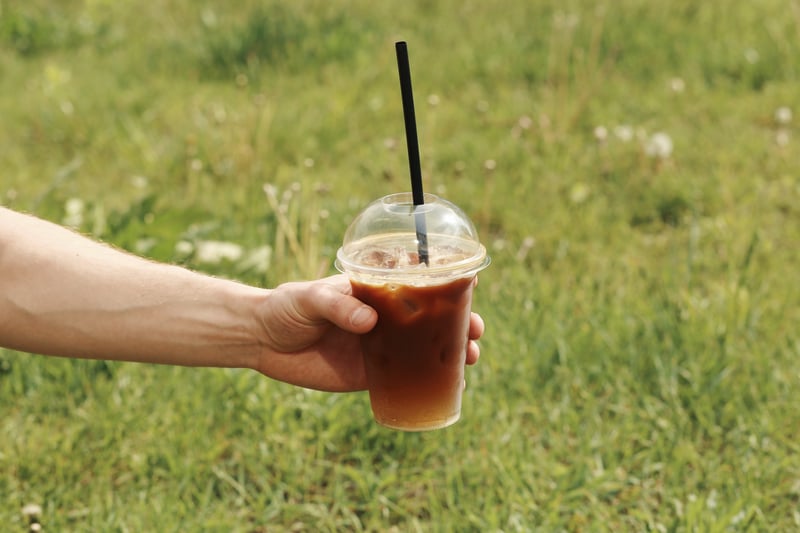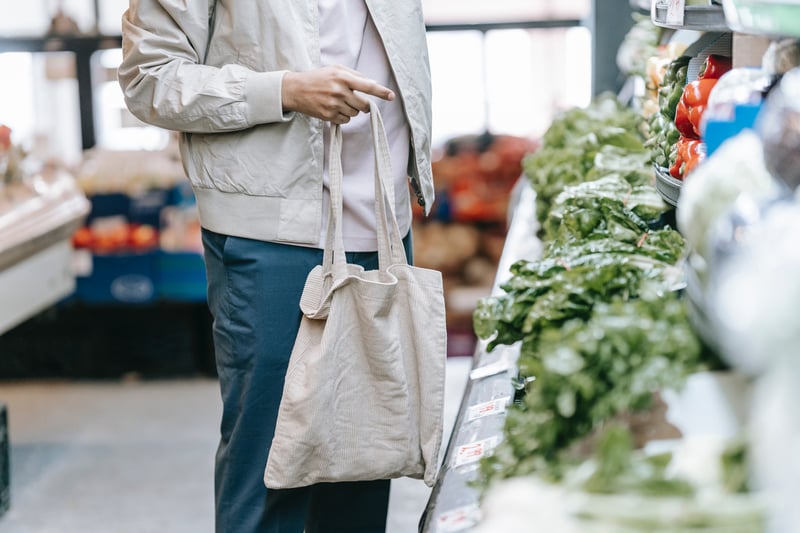
No matter what you’re shopping for, it seems like avoiding single-use plastic packaging is an insurmountable feat these days. Whether you’re ordering takeout, going on a trip to the grocery store, or shopping for new clothes online, plastic containers or wrapping will often be involved somehow. How to use less plastic is likely on your mind, but you may not know what to do about it.
While of course we recommend upcycling as much as you can, there’s only so much you can do with old paper coffee cups and used, torn plastic wrap. And many plastic products, especially ones made of plastic #3 - #5, are not accepted by most municipal facilities.
Though avoiding plastic completely is quite an undertaking, there are some small changes you can make in your daily routine or general habits that will help to reduce your plastic use, as well as your contribution to the number of microplastics - tiny pieces of plastic that are invisible to the naked eye - in our oceans and landfills. We’ve put together five eco tips to help you feel better about your daily decisions.
But before we start: Did you know that only 5% of recyclable plastic actually gets turned into new things?
If you give a hoot about the environment, you probably recycle. But it can feel like a fruitless effort. Most recyclables end up landfilled or incinerated. There's no better way to put it: Our recycling system is broken.
We've put together a free recycling guide that gets into the nitty-gritty of our broken recycling system. In the guide, you'll find a recycling roadmap that lets you know what each recycling number means, and what recyclables are commonly accepted by municipalities.
1. Mix up your morning beverage

If you go out for your morning coffee or tea pick-me-up every day, you’re probably aware of how much waste disposable coffee cups generate. Paper cups are generally lined with plastic, making them non-recyclable and non-biodegradable. The plastic cups that iced drinks come in are no better.
If you already make your drink at home, that’s great! But there’s other potential issues to be aware of.
If you’re a tea drinker, do you use pre-made tea bags? If so I may have some unfortunate news for you. Though tea bags appear to be nothing more than paper sachets with a string attached, many tea manufacturers line the bags with polypropylene to help them hold their shape when placed in hot liquid. A single tea bag steeped in hot water can release 11.6 billion microplastics into the water, which are then consumed by the person drinking the tea.
And coffee drinkers may be guilty of contributing to plastic waste as well. This is especially so if you use single-use coffee pods.
What can you do?
If you tend to go out for coffee or tea, making the switch to a reusable thermos or bottle, though less convenient when you’re on the go, is the best way to shrink your carbon footprint. Some coffee shops will let you bring in your own cup and fill it up for you - even Starbucks if you're a rewards member!
And if you make tea at home, some tea brands offer bags that aren’t lined with plastic, though they may be difficult to find since most brands don’t specify what their bags are made of. If you want to be sure you’re avoiding microplastics in your tea, you can brew loose-leaf tea instead. There’s a wide variety of metal and silicone tea strainers that will make that process a breeze.
For coffee fanatics (like myself!) it may be beneficial to switch to a drip coffee maker or French press. However, if you don’t want to shell out for a new machine or just can’t give up your pod-based coffee fix, there are multiple ways to make your daily brew more eco-friendly. Many brands make reusable pods that you can fill yourself and reuse indefinitely - just check to be sure they’re compatible with your machine before you buy. But if you already have a bunch of single-use pods in your home or you plan to keep using them, companies like Terracycle offer recycling programs for some brands of used pods.
2. Buy sustainably made clothing, or thrift whenever possible
Sustainable clothing brands use manufacturing practices that are social and earth conscious. They strive to consume less energy and water during the manufacturing process, and use fabrics that are recycled or made from natural fibers whenever possible, as opposed to synthetic fibers like nylon and polyester.
A little-known fact about clothing materials is that natural fibers like cotton tend to be better for the environment, though it depends on how they are manufactured. Cotton in particular requires a lot of water, both for growing the plant and for the manufacturing process. However, sustainable clothing companies work to reduce the amount of water they consume.
The main downsides to synthetic clothing materials is that they leach microplastics into the water supply during production and while they’re being washed in a machine, and they require the consumption of non-renewable resources to produce. Though both types of clothing consume some amount of fossil fuels during production, natural fibers tend to be better for the environment.
We understand that, due to the generally higher cost of sustainably made clothing, you might not be able to fill up your entire closet with it; we just encourage you to spring for sustainable brands when you can. If you want to search for sustainable brands but don’t know where to look, The Good Trade is a helpful source.
Additionally, a more affordable alternative to buying new clothing is thrifting used clothing. Thrifted clothes give old fabrics new life and help avoid waste.
3. Use reusable bags

This one is pretty much a no-brainer. Single use plastic bags are a scourge on the environment - they’re often not accepted by household recycling pickup, and they’re not good for more than a couple uses since they tend to stretch out and tear easily. So they end up in landfills, where they remain for potentially thousands of years, because they’re not biodegradable either.
Get yourself a good few reusable grocery bags. Not only are they more robust than plastic bags and will be able to handle heavier stuff without breaking, but using them is an easy way to be more eco-friendly. It may take a few tries to get into the habit of bringing them with you, so you may find yourself doubling back to grab them. But once you’ve gotten accustomed, trust me, you won’t want to go back!
4. Avoid plastic straws whenever you can
This is another eco-friendly habit that has gained traction over the past few years. It’s easier than ever to avoid plastic straws, since many big companies are making the switch to paper, or no straws at all. If you can avoid using plastic straws, the planet will thank you.
Giving up plastic straws doesn’t mean you have to give up straws altogether, or that you’re stuck using soggy paper straws. There are plenty of options for reusable stainless steel or silicone straws.
5. Look into beauty products that aren't made from plastic or are recyclable
Beauty products like eyeliner and mascara are a huge contributor to plastic waste, and components of their packaging are often not recyclable at all. For example, while mascara tubes are normally made of polypropylene, a type of plastic that is typically accepted by recycling facilities, mascara wands are not recyclable. Really, no makeup brushes, applicators, or wands are recyclable.
Some makeup brands have made sustainability a priority, however, and have started using glass or metal containers wherever they can, which tend to be recyclable. Rather than the traditional plastic pan packaging that most eyeshadow palettes are composed of, more sustainable eyeshadow tends to have each color packaged in an individual metal container. And more sustainably packaged liquid products tend to come in glass bottles.
Sustainable mascara normally comes in pans as well. To use these products, you can get a reusable mascara wand, or “spoolie”, and dip it into the pan. One example is Besame Cosmetics’ highly rated Black Cake Mascara. The brush is reusable, and they even sell refills so you can keep using the same pan over and over again!
Using sustainable makeup may require you to switch up the products you use, but it’s a great way to reduce your carbon footprint if you’re open to it.
We hope that these five eco tips will help you work towards a more sustainable lifestyle. And if you're looking for even more ways to help the planet, be sure to check out our recycling guide!

